Key takeaways:
- Demographic maps reveal the characteristics and stories of populations, highlighting factors like age, income, and education that shape communities.
- Drone mapping offers enhanced aerial perspectives, improving data collection efficiency and uncovering patterns not visible through traditional methods.
- Utilizing tools like Pix4D, GIS software, and Tableau facilitates in-depth analysis and visualization of demographic data, transforming numbers into impactful narratives.
- Effective analysis of demographic maps involves setting clear goals, engaging with data layers, and synthesizing findings into actionable insights that inspire community discussions.
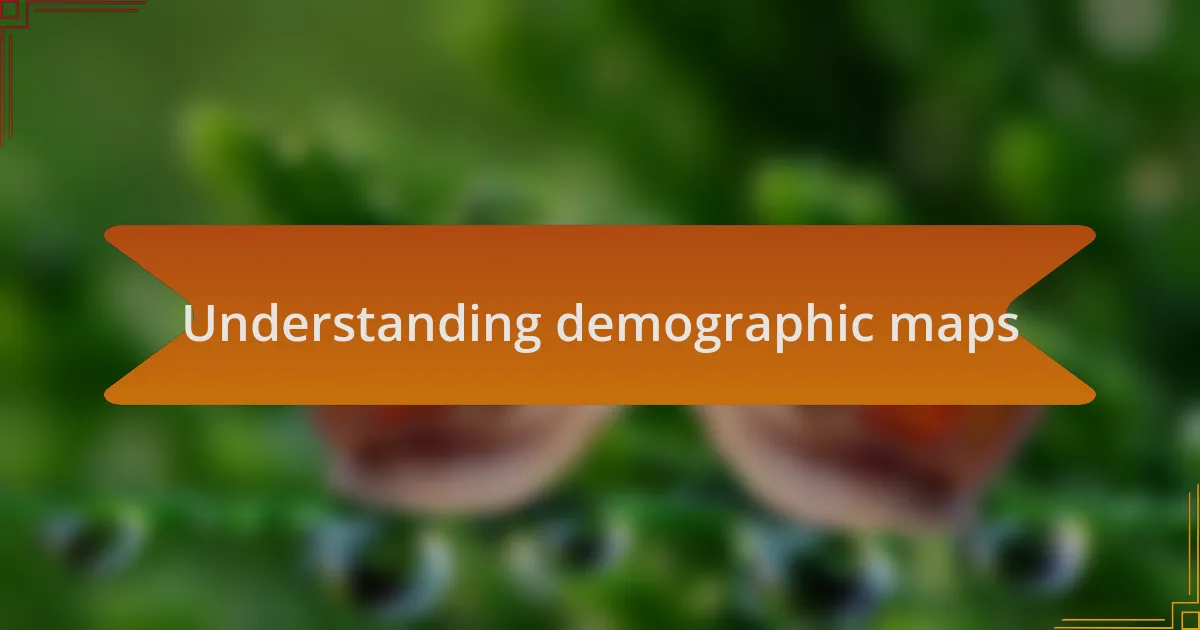
Understanding demographic maps
Demographic maps are invaluable tools that visually represent the characteristics of populations within specific areas. I remember the first time I encountered one; it felt like unlocking a hidden language about the community around me. It makes you wonder, how can a simple map tell stories of diversity, density, and distribution?
When analyzing demographic maps, I find myself captivated by how different variables—such as age, income, and education levels—intersect to shape the social fabric of a region. For instance, certain neighborhoods might glow with youthful vibrancy, while others may exhibit more maturity, revealing layers of history and experience. Isn’t it fascinating to think about what these demographic shifts imply for the future of a community?
Moreover, the emotional weight behind these figures often strikes me. Each dot or color variation on the map represents real lives, aspirations, and challenges. It’s a reminder that behind numbers, there are stories waiting to be uncovered. How do these demographics influence local culture, opportunities, and even challenges? When I reflect on my experiences in communities affected by these shifts, I realize the profound impact that understanding this data can have on fostering empathy and informed decision-making.

Importance of drone mapping
Drone mapping plays a crucial role in capturing high-resolution aerial imagery that can transform our understanding of demographics. I remember participating in a project where we utilized drone technology to map out urban areas in Zanzibar. The ability to visualize population density and distribution from above provided insights that traditional mapping methods couldn’t offer, revealing patterns that were otherwise hidden from view.
Moreover, drones enable us to gather data more efficiently, allowing for timely analysis. This speed is essential when addressing urgent issues like resource allocation and urban planning. I once worked on a community project where quick access to demographic data through drone mapping allowed us to identify areas in need of educational resources, ensuring that support reached those who needed it most.
Incorporating drone mapping into demographic analysis fosters a deeper sense of connection with the community. For instance, I once observed how mapping would highlight vital aspects like access to healthcare facilities in underserved areas, making it evident that one’s neighborhood can significantly influence health outcomes. Isn’t it remarkable how modern technology can illuminate these critical differences, urging us to act on behalf of those who may otherwise remain invisible?
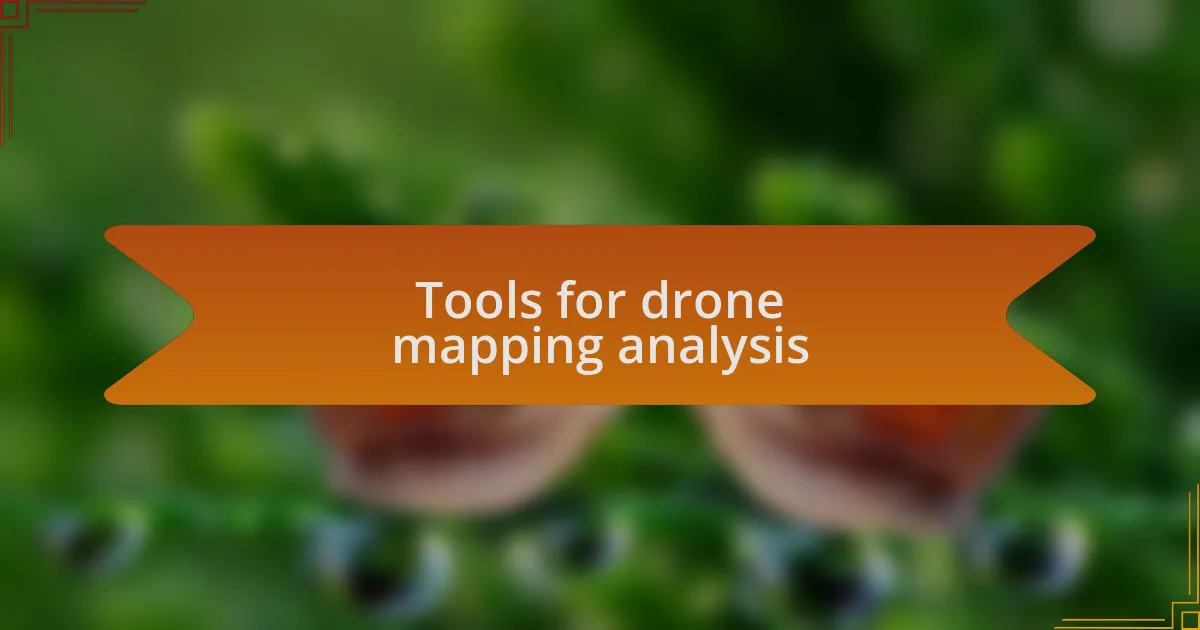
Tools for drone mapping analysis
When delving into demographic mapping with drones, specific tools become indispensable. I’ve found software like Pix4D and DroneDeploy to be incredibly user-friendly. These platforms facilitate the processing of high-resolution images into detailed maps, making it easier for me to analyze population patterns accurately.
Another remarkable tool I’ve utilized is GIS (Geographic Information System) software, such as QGIS. It allows for layers of data to be overlaid, enhancing my understanding of the demographic landscape. I distinctly recall a project where combining drone imagery with census data helped me visualize trends that were utterly eye-opening—showing me not just where people lived, but also how socio-economic factors intersected in unexpected ways.
Lastly, engaging with analytical tools like Tableau has further amplified my capabilities. This software lets me create dynamic visualizations that tell compelling stories about the data. I often ask myself how powerful it is when data comes alive through visuals—transforming raw numbers into narratives that can drive change in communities. In my experience, coupling drone mapping with these tools allows for actionable insights that traditional methods overlook.
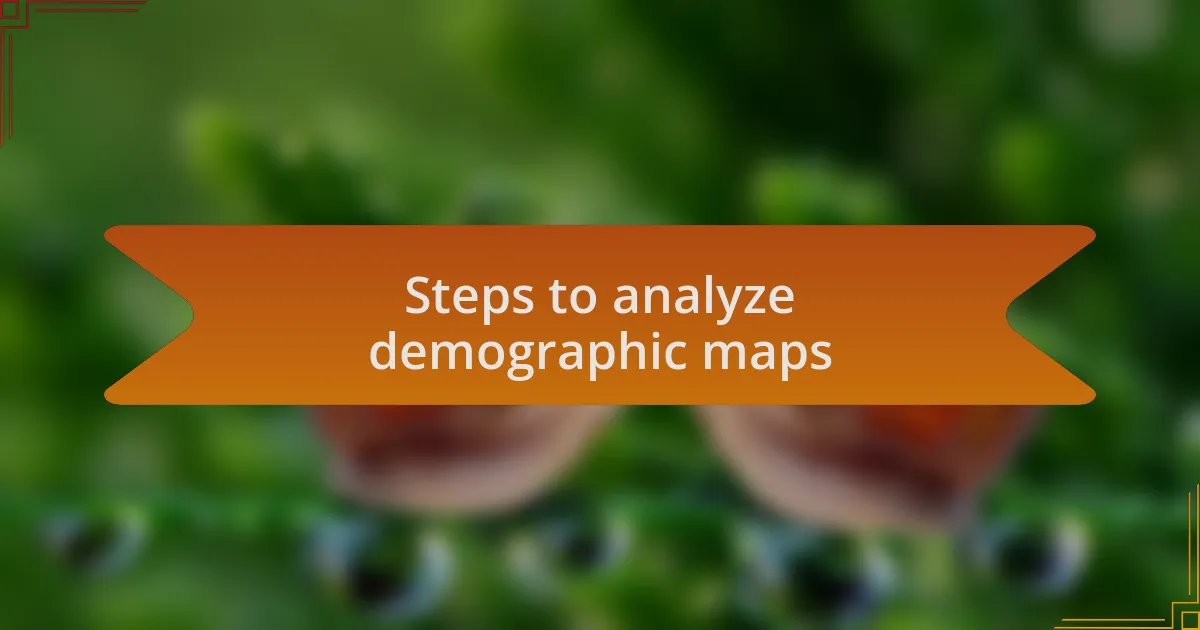
Steps to analyze demographic maps
To effectively analyze demographic maps, I begin by defining the goals of my analysis. What specific patterns or trends am I looking to uncover? I often find clarity in establishing this focus allows me to filter through the data more efficiently, steering my investigation into relevant areas while minimizing distractions from unrelated information.
After setting clear objectives, I dive into the data layers. Each layer tells a different part of the story, and I remember a time when I was analyzing a map and stumbled upon a surprising correlation between housing density and public transportation access. This prompted me to ask myself, how can this information inform future urban planning? Engaging with each layer helps me notice subtleties that might blend into the background otherwise.
Finally, I synthesize my findings into actionable insights. It’s not enough to merely chart the data; I reflect on its implications. During one project, the results led me to question existing resource distribution and its impact on the community. I’ve learned that transforming demographic data into a compelling narrative can spark vital discussions within local organizations. In my experience, storytelling through data not only highlights issues but also inspires possible solutions.
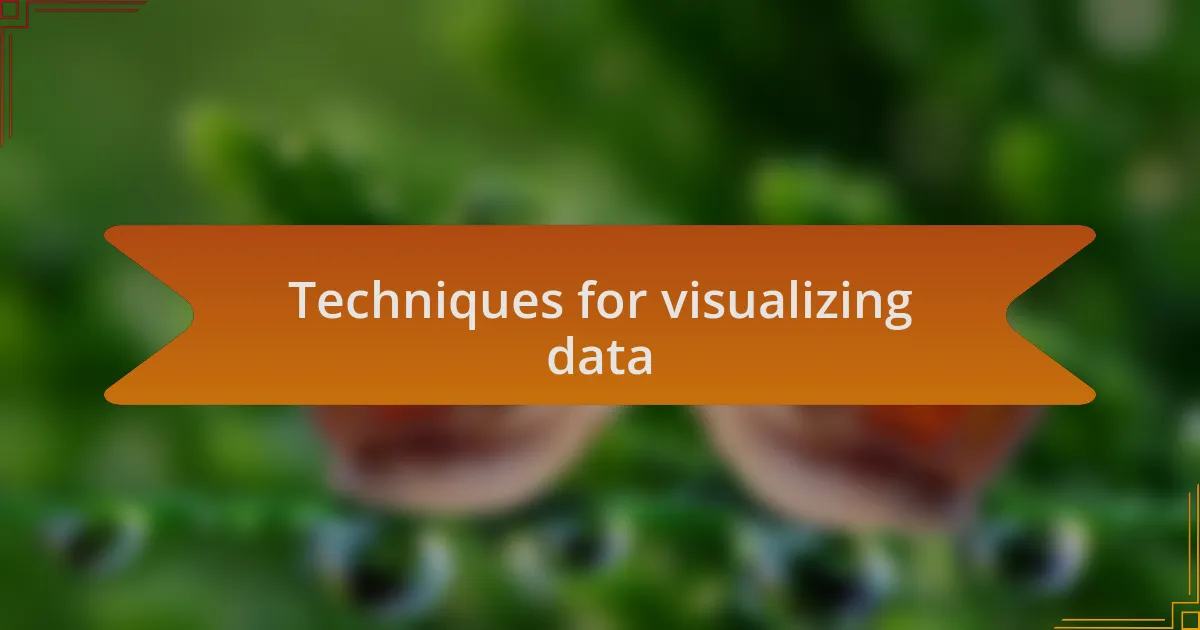
Techniques for visualizing data
When it comes to visualizing data from demographic maps, I find that using color gradients can really change the game. I remember a project where I applied a heat map to illustrate population density across different neighborhoods in Zanzibar. The varying colors allowed me to quickly identify hotspots of high population, making it much easier to spot trends at a glance. Isn’t it fascinating how something as simple as color can enhance our understanding of complex data?
Another technique that I’ve experimented with is the use of interactive graphs. During a recent analysis, I integrated interactive maps that revealed additional layers of information as users hovered over specific areas. This not only increased engagement but also allowed stakeholders to ask deeper questions about the data. Have you ever found yourself lost in an interactive graph, uncovering layers of information you didn’t initially see? It’s an exhilarating feeling that I believe can lead to more informed discussions.
Finally, storytelling through data visualization can immensely amplify its impact. While working on a community project, I created a narrative with my demographic data, using charts and infographics to weave a compelling storyline. This approach struck a chord with the audience, sparking discussions that I hadn’t anticipated. How often do we overlook the power of narrative in presenting raw data? I’ve realized that when we frame our findings within a story, we invite others to connect emotionally with the data, fostering a shared understanding and collaboration.
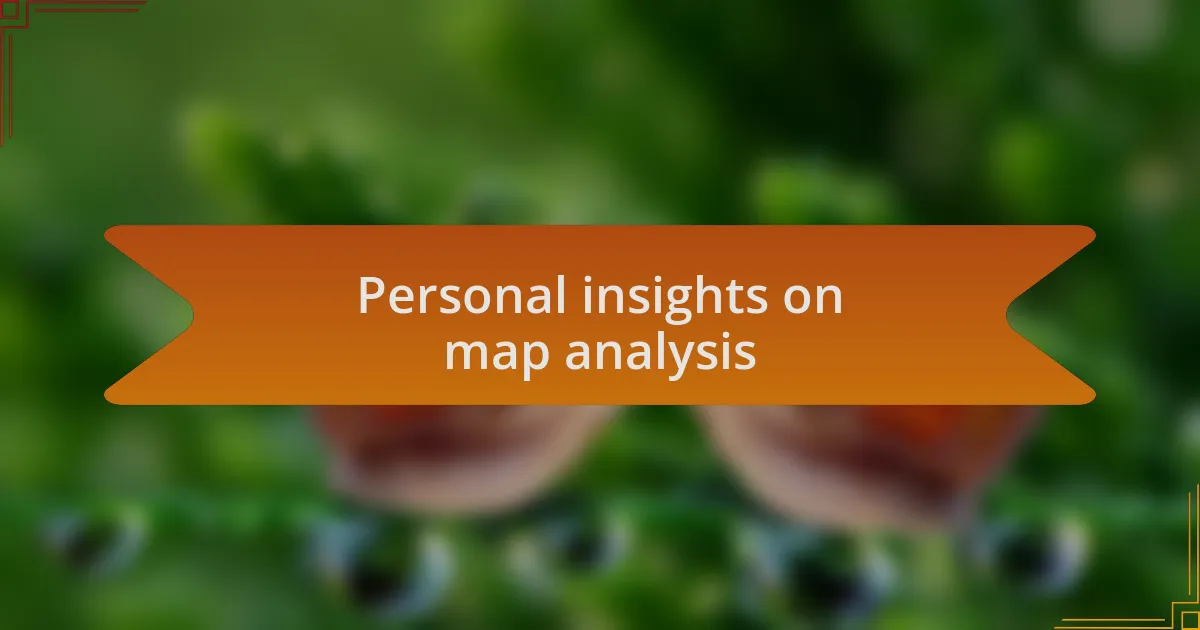
Personal insights on map analysis
When analyzing demographic maps, I often find myself reflecting on the significance of spatial relationships. There was one instance during a survey when I noticed that proximity to local schools heavily correlated with family sizes in Zanzibar. This realization made me think: what could this mean for urban planning? The connection felt not just statistical but profoundly human, making me appreciate the stories behind the numbers.
I’ve also found that the context in which data is presented can shift perceptions entirely. During a workshop, I displayed demographic maps alongside cultural landmarks to highlight community dynamics. Participants expressed surprise at how historical context could influence current demographics. Isn’t it intriguing how layers of history and culture can redefine our understanding of a place? Engaging with maps this way often layers new meaning, opening doors to discussions I never expected.
Through my experience, I’ve come to value the moments of discovery that maps can provide. One time, while analyzing residential patterns, I stumbled upon an unexpected trend: areas with lower population density had a high percentage of small businesses. This insight made me pause and wonder why that was happening. Each map I analyze still holds the potential for such surprises, reminding me that every data point is a clue to a larger narrative waiting to be uncovered.